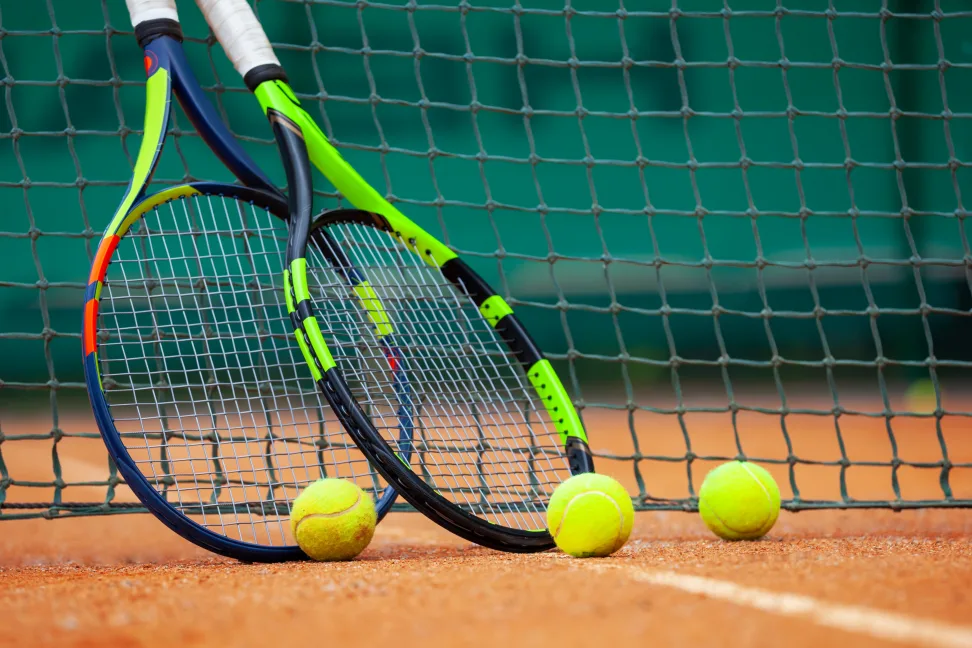I. Introduction

A. The physical demands of tennis as a sport
Tennis is a highly dynamic and physically demanding sport that requires a combination of skill, agility, and endurance. Players must constantly move around the court, making split-second decisions and executing precise shots. The sport involves a variety of movements, including running, jumping, lunging, twisting, and hitting, which engage multiple muscle groups and elevate heart rate.
B. Understanding the calorie-burning potential of playing tennis
One of the key benefits of playing tennis is the potential for calorie burn. The intensity and duration of the game can contribute to significant energy expenditure, making it an effective way to maintain or lose weight. In this article, we will delve into the factors that influence calorie burn in tennis and explore the health and fitness benefits that can be gained from regular play.
II. Factors Influencing Calorie Burn in Tennis
A. Intensity and Duration of Play
The intensity and duration of tennis matches play a significant role in determining the amount of calories burned. High-intensity rallies, which involve quick and explosive movements, require more energy expenditure compared to slower-paced play. Additionally, longer matches, such as those that go to three sets or more, contribute to increased calorie burn due to the extended duration of physical activity.
Comparing calorie burn in singles versus doubles matches can also provide valuable insights. Singles matches typically have more intense rallies and require players to cover more ground on the court, resulting in higher calorie burn. Doubles matches, on the other hand, may involve less overall movement but can still offer a good cardiovascular workout.
B. Player’s Body Weight and Composition
An individual’s body weight and composition are essential factors in estimating calorie expenditure during tennis. Generally, individuals with higher body weight tend to burn more calories during physical activity due to the increased energy required to perform movements.
Body composition, specifically the ratio of muscle to fat, also plays a role. Muscle is more metabolically active than fat, meaning that individuals with a higher muscle mass will have a higher resting metabolic rate and burn more calories even at rest. Therefore, individuals with more lean muscle mass may experience a slightly higher calorie burn during tennis compared to those with a higher percentage of body fat.
C. Tennis Style and Playing Strategy
Different tennis styles and playing strategies can impact calorie burn. Aggressive baseline play, characterized by powerful groundstrokes and staying primarily at the back of the court, requires constant movement and rapid direction changes. This style of play can result in higher calorie burn due to the continuous energy expenditure.
On the other hand, the serve and volley technique, where players come to the net after serving, involves short bursts of intense movement followed by periods of less activity. While this style may not result in the same calorie burn as aggressive baseline play, it still offers a good cardiovascular workout and engages muscles in the upper body.
III. Estimating Calorie Burn in Tennis
A. General Calorie Expenditure Estimates

When it comes to estimating calorie burn in tennis, it’s important to consider the intensity and duration of the game. On average, one can expect to burn around 400 to 600 calories per hour of tennis play. However, it’s essential to differentiate between recreational and competitive play as the calorie expenditure may vary.
Recreational tennis, which typically involves less intense rallies and shorter bursts of activity, may result in a calorie burn of around 400 to 500 calories per hour. On the other hand, competitive tennis, which involves longer, more intense rallies and continuous movement, can lead to a higher calorie burn of approximately 500 to 600 calories per hour.
B. Calorie Burn by Body Weight
Calculating calorie burn in tennis can also take into account an individual’s body weight. It’s important to note that the more an individual weighs, the more energy they will expend during physical activities like tennis.
To estimate calorie burn based on body weight, one can use a general formula. Multiply the average calorie burn per hour (400-600 calories) by the individual’s weight in kilograms. For example, if someone weighs 70 kilograms, their estimated calorie burn would be around 28,000 to 42,000 calories per hour.
Understanding how body weight affects calorie expenditure in tennis is essential for individuals who want to monitor their energy expenditure accurately during the game. It can help them adjust their eating habits and maintain a balance between calorie intake and expenditure.
IV. Health and Fitness Benefits of Playing Tennis

A. Cardiovascular Fitness
Playing tennis is an excellent way to improve cardiovascular fitness and overall heart health. The constant movement and high-intensity nature of the game help increase heart rate and strengthen the cardiovascular system.
When playing tennis, the continuous movement on the court increases oxygen intake, promoting better blood circulation. This, in turn, enhances stamina and endurance, allowing players to engage in longer and more intense matches. Regular participation in tennis can lead to improved cardiovascular fitness, reduced risk of heart disease, and increased overall stamina.
B. Core Strength and Stability
Tennis requires a strong core for stability and power generation during strokes. The core muscles, which include the abdominals, obliques, and lower back, help generate rotational power and stability during movements such as serves, forehands, and backhands.
The dynamic movements in tennis, such as lateral movements, pivots, and sudden changes in direction, help engage the core muscles and improve their strength and stability. Regular play can lead to stronger core muscles, better balance, and improved overall body control.
C. Muscular Endurance and Power

Playing tennis also helps develop muscular endurance and power, particularly in the lower body muscles. The lunges and sprints involved in reaching shots and quickly moving around the court engage the muscles of the legs, including the quadriceps, hamstrings, and calves.
These repetitive movements require muscular endurance and power, as players often need to maintain a low position and exert force to propel themselves in various directions. Regular play can lead to stronger and more resilient lower body muscles, allowing players to sustain high-intensity rallies over a prolonged period.
In addition to the lower body, tennis also engages the muscles in the arms, shoulders, and upper back. The repetitive swinging and hitting motions involved in strokes like the forehand and backhand help develop muscular strength and endurance in the upper body.
Overall, playing tennis offers numerous physical health benefits, including improved cardiovascular fitness, enhanced core strength and stability, and increased muscular endurance and power. Whether it’s a casual recreational game or a competitive match, tennis provides an enjoyable and effective way to stay fit and active.

